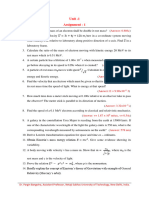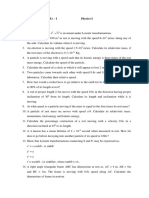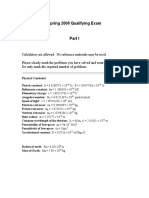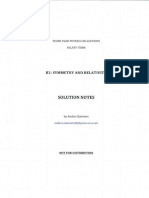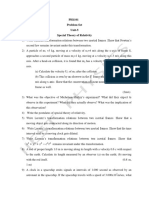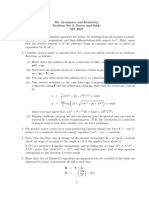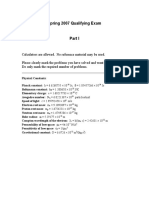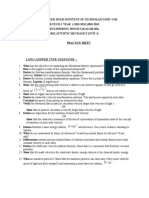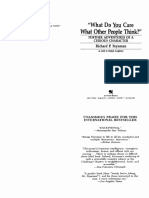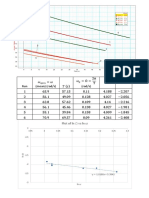0% found this document useful (0 votes)
83 views1 pageCM Problem Sheet 6
This document contains a 7 question problem sheet for a classical mechanics course. The questions cover topics like: [1] calculating velocities needed for an electron's mass to equal its rest mass or a proton's mass; [2] computing the length of a moving rod; [3] finding the kinetic energy of a particle from particle disintegration. The questions require using concepts like relativistic mass, length contraction, particle kinematics, and time period for oscillatory motion.
Uploaded by
apandada1Copyright
© © All Rights Reserved
We take content rights seriously. If you suspect this is your content, claim it here.
Available Formats
Download as PDF, TXT or read online on Scribd
0% found this document useful (0 votes)
83 views1 pageCM Problem Sheet 6
This document contains a 7 question problem sheet for a classical mechanics course. The questions cover topics like: [1] calculating velocities needed for an electron's mass to equal its rest mass or a proton's mass; [2] computing the length of a moving rod; [3] finding the kinetic energy of a particle from particle disintegration. The questions require using concepts like relativistic mass, length contraction, particle kinematics, and time period for oscillatory motion.
Uploaded by
apandada1Copyright
© © All Rights Reserved
We take content rights seriously. If you suspect this is your content, claim it here.
Available Formats
Download as PDF, TXT or read online on Scribd
/ 1

